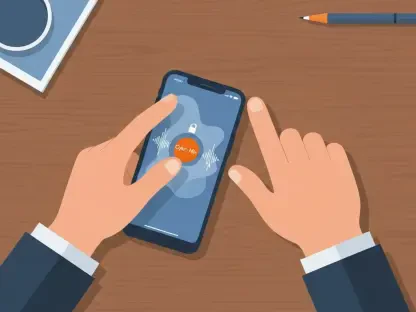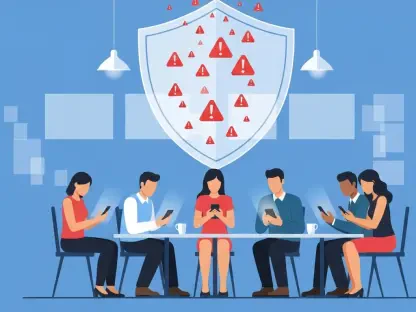Scams have become increasingly sophisticated over the years, and one of the latest methods scammers are using to trick people into handing over their financial information is through fake toll bill notifications. You’ve probably noticed an increase in unsolicited text messages on your phone declaring you owe money for an unpaid toll bill. No matter if you recently took a toll road or haven’t driven at all, you might still receive these alarming texts. According to the Federal Trade Commission (FTC), this surge in communication about unpaid toll bills is very likely part of a widespread scam. The messages often look credible, mentioning specific amounts and including links that direct you to what appears to be a payment portal. Here’s how to distinguish between legitimate toll notifications and scams, while protecting your personal information and finances.
1. Avoid Tapping on Any Links or Responding to Unexpected Messages
The first step towards shielding yourself from scammers is to avoid clicking on any links in the message or responding to unexpected texts. Scammers are proficient at crafting messages that appear to be from official tolling agencies across the country. These messages typically claim that you owe money for an unpaid toll and need to make the payment immediately to avoid additional fees or other penalties. By clicking on the provided link, you risk being redirected to a malicious website that is designed to steal your bank or credit card information. Rather than responding to the message or clicking on any links, take a moment to evaluate the content of the text and consider whether you recently traveled on toll roads that could warrant such a notification.
Another tactic scammers use is creating a sense of urgency in the message, which can make it tempting to click on the link and resolve the supposed issue right away. They might warn you that failing to pay within a certain number of hours will result in increased late fees, suspension of your vehicle registration, or even a report to credit agencies. It’s critical to remain composed and not fall for these pressure tactics. The best course of action is to delete the message immediately, rather than engaging in any form of interaction with the sender.
2. Verify the Message’s Authenticity
If you believe the text could be legitimate, your next step should be to verify its authenticity by contacting your state’s tolling agency directly using a reliable phone number or website you know is legitimate. Do not, under any circumstances, use the contact information provided in the unsolicited text message itself, as this could lead you right back to the scammer. Instead, locate the official contact details on the state’s tolling agency’s verified website or through official documentation you have previously received.
When you call or visit the official website, explain that you received a text message about an unpaid toll bill and seek clarification. Agency representatives can confirm whether the messages you received are valid or part of a scam. Taking the extra time to verify the message through these legitimate means can save you from potential financial fraud and identity theft. Moreover, most legitimate tolling agencies will not demand immediate payment through a text message and will typically send notices by mail or through secure online accounts.
Being proactive in confirming the message’s legitimacy ensures that you take the necessary steps to protect yourself against these phishing scams. Feeling equipped with the right information will help you respond appropriately and avoid falling victim to fraudulent activities.
3. Report and Erase Unwanted Text Messages
After verifying the authenticity of the message and ensuring it is indeed a scam, it’s crucial to report and erase the unwanted text messages from your phone. Utilizing your phone’s “report junk” option is an effective way to notify your messaging app about the suspicious message. Additionally, you can forward the message to 7726 (SPAM), a number designated by most wireless carriers for reporting spam texts. Forwarding the message to this number helps the carriers take action that can prevent similar messages from reaching other users.
In addition to reporting the text, it is equally important to delete it from your phone. Keeping these messages can lead to accidental clicks or further exposure to the scam. By erasing the texts, you minimize the risk of such incidents occurring. It is also beneficial to spread awareness among your family and friends, informing them about the scam and encouraging them to follow the same steps to protect their information.
Moreover, it might be wise to keep a record of the scam messages you receive before you delete them, such as taking screenshots, which can be useful if you decide to report the scam to the Federal Trade Commission (FTC) or local law enforcement. Provide detailed information so they can investigate and take action against the fraudulent scheme. Encouraging others to report similar scams can help form a collective defense against these pervasive tactics.
Conclusion
The first step to protect yourself from scammers is to avoid clicking on links in unexpected messages or responding to unsolicited texts. Scammers are skilled at creating messages that look like they’re from legitimate tolling agencies, claiming you owe money for unpaid tolls and must pay immediately to avoid fees or penalties. Clicking the link may direct you to a malicious site designed to steal your bank or credit card information. It’s wiser to evaluate the text and consider if you recently traveled on toll roads that would justify such a notice.
Another strategy scammers use is to create a sense of urgency, urging you to click the link to resolve the issue quickly. They may threaten increased late fees, suspension of your vehicle registration, or even reports to credit agencies if you don’t pay within hours. It’s crucial to stay calm and not be swayed by these pressure tactics. The safest option is to delete the message immediately and not engage with the sender at all. Stay vigilant and cautious to avoid falling victim to these scams.









